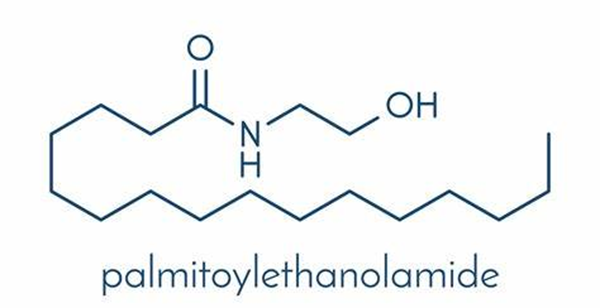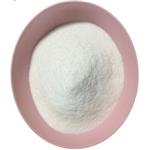Palmitoylethanolamide: Benefits and Uses, Side Effects
Mar 13,2024
What is Palmitoylethanolamide ?
Palmitoylethanolamide(PEA) is a nutraceutical compound that occurs naturally in many foods of plant and animal origin, but is poorly water soluble in its natural form. Originally derived from soy lecithin, egg yolk and peanut meal, and later isolated from mammalian tissues, it is an endogenous compound in the human body.

Palmitoylethanolamide has anti-inflammatory, analgesic, anticonvulsant, antibacterial, antipyretic, antiepileptic, immunomodulatory, and neuroprotective activities. It is also an endogenous cannabinoid (eCB)-like bioactive lipid mediator belonging to the N-acyl ethanolamine (NAE) family of fatty acid amides. It is synthesised on demand within the lipid bilayer, acts locally, and is present in all tissues including the brain. PEA is thought to be a pro-homeostatic protective response to cellular injury that is upregulated in disease states.
Benefits and Uses
immune regulation
The immunomodulatory effects of PEA are summarised in the table below. The beneficial effects of PEA on immune function have been demonstrated in numerous animal and human studies. Therefore, appropriate supplementation with PEA can be used to maintain immune health.
anti-inflammatory
Palmitoylethanolamide has been shown to be useful in the treatment of neuropathic and inflammatory pain, and PEA is superior to placebo or active controls in the analgesic treatment of chronic pain. In many studies, PEA has been associated with improved functional status and quality of life with largely negligible reported side effects.
Animal studies have confirmed the antiallergic effects of PEA, including downregulation of MC recruitment and degranulation.The protective effects of PEA are mediated by its cellular targets, including direct activation of PPAR-α and GPR55 receptors and indirect activation of cannabinoid receptors (CB1 and CB2) and TRPV1 channels. In a study on canine skin mast cells, PEA (dose range 10-8 M to 10-5 M) induced significant and dose-dependent inhibition of PGD2, TNF-α and histamine release.
neuroprotective
The neuroprotective effect of Palmitoylethanolamide is due to its ability to alter MC, microglia and astrocyte activation. It enhances microglia migration but does not promote activation, thereby increasing resistance to infection. Since the endogenous cannabinoid system regulates axon growth, guidance, neurogenesis and behaviour, these neurotrophic effects may contribute to the benefits of PEA in maintaining the cognitive, behavioural and mental health of individuals.
analgesic
Inflammation is a prominent feature of pain.PEA has been studied in preclinical models of inflammatory and neuropathic pain, and its efficacy has been demonstrated in clinical conditions such as osteoarthritis and arthralgia, neuropathic pain, postoperative pain, fibromyalgia, and endometriosis.PEA acts directly on PPAR-α and GPR55 receptors, and indirectly on CB1, CB2, and TRPV1 receptors. It suppresses inflammation by inhibiting MC activation, down-regulates mediators such as NGF, COX-2, TNF-α and iNOS, and inhibits microglia and astrocyte activation, which in chronic inflammatory states allows PEA to preserve peripheral nerve morphology and reduce nerve endothelial oedema and macrophage infiltration.The analgesic efficacy and safety profile of PEA make it a promising treatment for chronic pain and pain in vulnerable individuals. promising alternative drug candidate.
Side Effects of Palmitoylethanolamide
Palmitoylethanolamide is generally well tolerated as a dietary supplement and may be safe when used orally at regular doses for up to 3 months, although nausea may occur. There are insufficient clinical trials to determine whether PEA can be safely used for longer than 3 months.
References
[1] VERA MORSANUTO. A New Palmitoylethanolamide Form Combined with Antioxidant Molecules to Improve Its Effectivess on Neuronal Aging.[J]. Brain Sciences, 2020. DOI:10.3390/brainsci10070457.
[2] PAUL CLAYTON. Palmitoylethanolamide: A Natural Compound for Health Management.[J]. International Journal of Molecular Sciences, 2021, 22 10. DOI:10.3390/ijms22105305.
- Related articles
- Related Qustion
- Applications and safety of Palmitoylethanolamide in the food industry Dec 16, 2024
Palmitoylethanolamide (PEA) is a natural plant active substance present in the diet and is also an endogenous cytoprotective lipid.
- Uses and Safety of Palmitoylethanolamide Jul 7, 2022
Palmitoylethanolamide (PEA) is a chemical made from fat. It is found naturally in foods such as egg yolks and peanuts, and in the human body.
- Bioactivity of Palmitoylethanolamide (PEA) Jan 5, 2022
Palmitoylethanolamide is an endogenous lipid that acts as a selective GPR55 agonist (EC50 values are 4, 19 800 and > 30 000 nM at GPR55, CB2 and CB1 receptors respectively).
Supplementation with pyridoxal 5'-phosphate monohydrate can synthesize neurotransmitters such as dopamine and serotonin, maintaining a healthy nervous system.....
Nov 4,2025Biochemical EngineeringOver half of all Soda Ash production is used in glass manufacturing, but it is used in the soap industry, paper production, pH adjustment, production of cleaners and detergents, and in the polymer and resin industries.....
Mar 13,2024Inorganic chemistryPalmitoylethanolamide
544-31-0You may like
Palmitoylethanolamide manufacturers
- Palmitoylethanolamide
-

- $5.00/ KG
- 2025-12-16
- CAS:544-31-0
- Min. Order: 1KG
- Purity: 99% hplc
- Supply Ability: 500TONS
- Palmitoylethanolamide
-

- $100.00 / 50kg
- 2025-12-16
- CAS:544-31-0
- Min. Order: 1kg
- Purity: 99%
- Supply Ability: 5000Ton
- Palmitoylethanolamide (PEA Micro)
-

- $0.00 / 1kg
- 2025-12-16
- CAS:544-31-0
- Min. Order: 1kg
- Purity: 0.99
- Supply Ability: 1000kg






